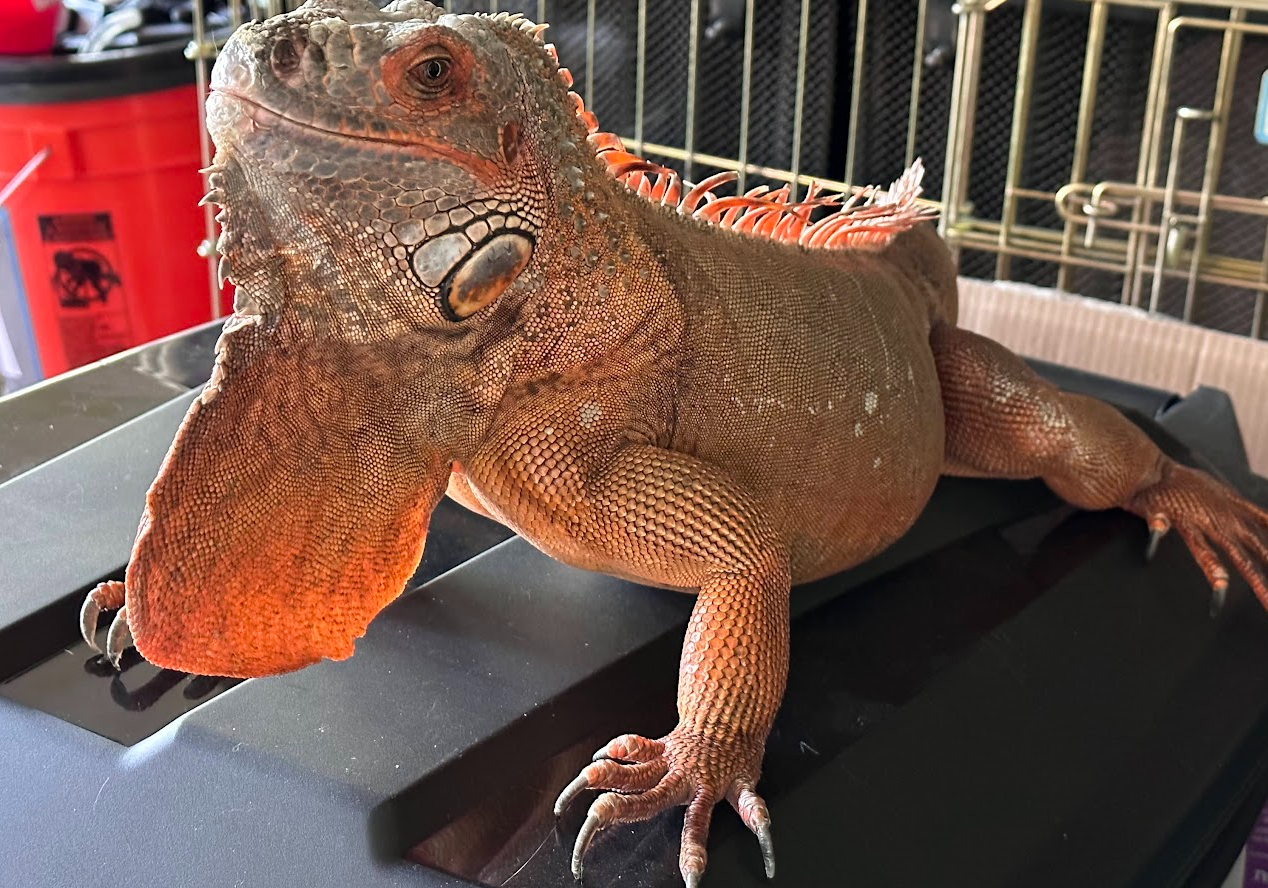Learn About - Green (Red) Iguanas!
Green iguanas are fascinating creatures! Here are some interesting facts about them:
Native Habitat: Green iguanas are native to Central and South America, including parts of Mexico, the Caribbean, and some areas in South America.
Size: Green iguanas can grow quite large. They typically reach around 5 to 6 feet in length, including their tail. The males tend to be larger than females.
Diet: They are primarily herbivores, feeding on leaves, flowers, and fruit. In the wild, they will sometimes consume small insects or animals, but this is relatively rare.
Color: They are usually bright green, but their color can change depending on temperature and stress. Some iguanas may turn darker when stressed or cold, and some are bred specifically for bright green, red, or aqua blue coloring.
Lifespan: In the wild, green iguanas live for about 20 years, but in captivity, with proper care, they can live even longer, sometimes up to 30 years.
Tail Defense: They have long, powerful tails that they can use as a defense mechanism. When threatened, a green iguana may whip its tail to deter predators.
Climbing Ability: Green iguanas are excellent climbers and often perch in trees, using their sharp claws and strong limbs to navigate through branches.
Communication: Iguanas communicate using body language, including head bobbing and the extension of their dewlap (a flap of skin under their chin). They also use tail movements and hissing to express themselves.
Aquatic Skills: While not a species of aquatic iguana, green iguanas are strong swimmers. They are known to dive into water to escape predators, using their long tails to propel themselves.
Teeth and Jaw: They have sharp, serrated teeth and strong jaws designed to shear through tough vegetation.
Conservation: While not currently endangered, green iguanas face threats in some areas from habitat loss and the pet trade. Some regions also consider them invasive species because they can damage crops and infrastructure.
These reptiles are fascinating both as wild animals and as pets, though they require significant care and space to thrive in captivity.


